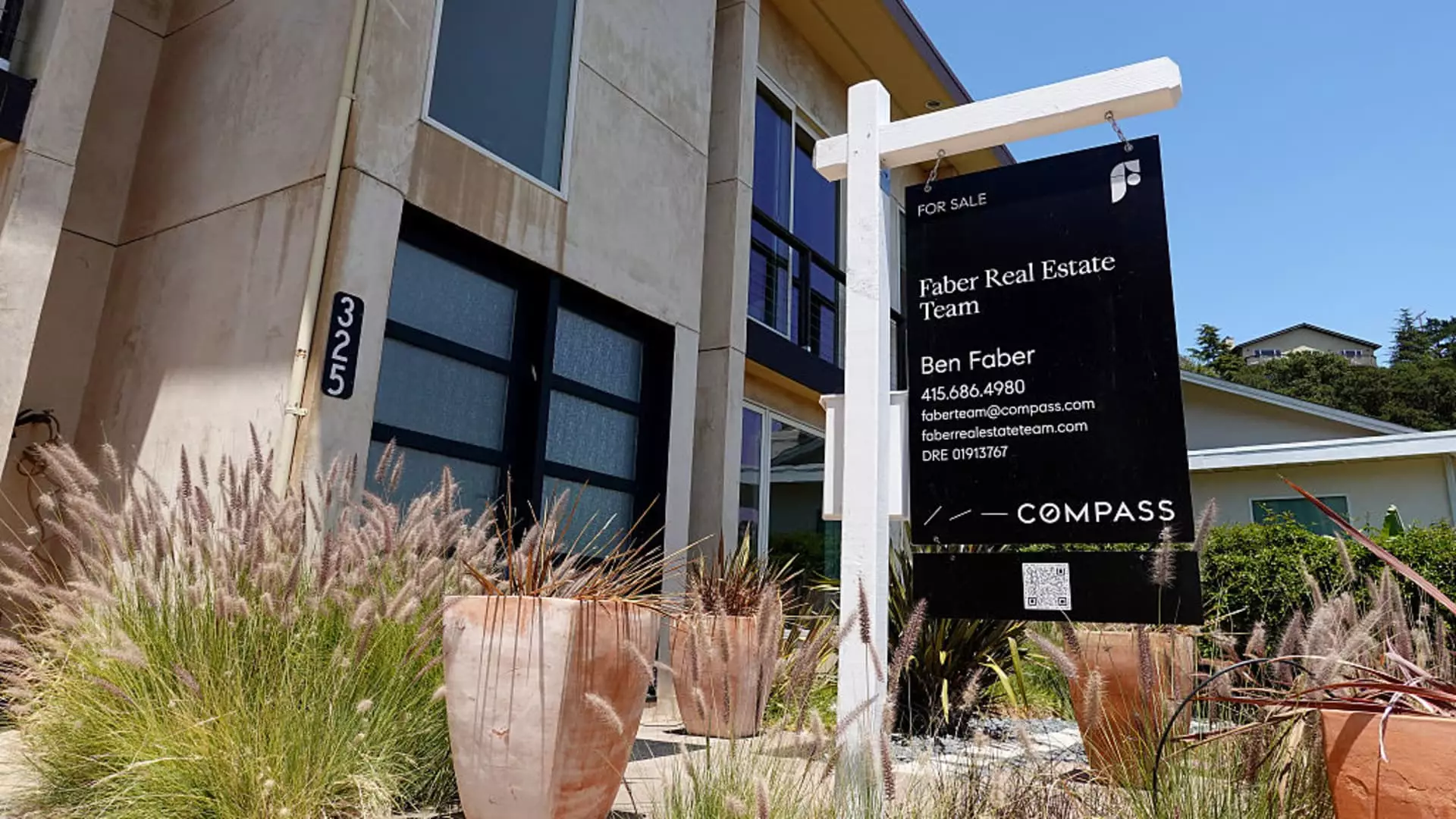The dynamics of the housing market are undergoing a significant transformation, marking a stark transition from the explosive growth fueled by the pandemic towards what many may optimistically describe as a more stable environment. Recent data from the S&P CoreLogic Case-Shiller Index reveals a troubling yet revealing trend: national home prices rose by a mere 2.7% in April, a stark decrease from March’s 3.4%. This trend is notable as it represents the smallest annual gain in almost two years, provoking questions about the sustainability of housing prices that had soared during an era of economic uncertainty.
What’s perhaps more striking than the slowdown itself is the speed at which it is accelerating. This indicates not just a blip, but a potential reordering of market realities where recent surges are rapidly losing momentum. Parcl Labs echoes these findings, reporting a nearly flat picture for prices when examined year-over-year. At first glance, one might dismiss this as simply post-pandemic normalization, but deeper analysis uncovers a landscape where certain markets are not merely flat—they’re negatively shifting.
Regional Realignment: Shifting Powers in Housing
The easing of price pressures is not restricted to a broad-scale national picture; it possesses several nuanced dimensions. Nicholas Godec from S&P Dow Jones Indices emphasizes an intriguing phenomenon: the “reshuffling” of regional leadership within the market. Twenty-four months ago, the Sun Belt regions basked in unprecedented demand; today, cities like Tampa and Dallas are seeing downturns in pricing—negative changes of 2.2% and 0.2%, respectively. Meanwhile, traditional powerhouses such as New York, Chicago, and Detroit are displaying resilience, with New York impressively climbing to a 7.9% annual gain.
This development signifies not just a slowdown but a broader maturation process within the market, which is now guided by concrete fundamentals rather than speculative trends fueled by unprecedented global circumstances. The disconnect witnessed in the past—where desirable locations were measured solely by pandemic-era surges—has begun to correct itself. Buyers now approach real estate with a level of caution, sparking conversations about the reasons behind these shifts.
Affordability Crisis: The Toll of Rising Costs
The surge in mortgage rates has profoundly reshaped the landscape for prospective homebuyers, particularly first-time buyers, who often face the brunt of such shifts. With rates surpassing 7% in April, potential monthly payments are hovering at generational highs, effectively pricing many out of the market. A striking realization emerges from recent data: in May, only 30% of home sales were to first-time buyers, a far cry from the historical norm of about 40%. This trend should alarm anyone who cares about housing accessibility, as it underscores a growing affordability crisis that leaves significant pools of potential buyers in a precarious position.
Even amidst rising inventory levels—though still below pre-pandemic norms—only a small fraction of sellers (about 6%) face potential losses, reinforcing the argument that while price corrections are occurring, we are far from a catastrophic reversion to the norms seen during the subprime mortgage crisis. This speaks volumes about the overall resilience of the market, but also illustrates how a recovery in true affordability remains a pressing concern.
A Long Way to Go: Supply and Demand Dynamics
The overarching theme in today’s housing market narrative is the dichotomy between supply and demand. Despite the rising supply of homes, existing homeowners—cautious and protective of their low mortgage rates—are reluctant to relinquish their properties. New construction hasn’t kept pace either, leading to a continued imbalance that gives rise to the floor preventing prices from plummeting drastically.
Godec’s insights echo this sentiment, suggesting we are facing a market not on the brink of collapse but instead responding to fundamental changes. While the declines in previously hot markets may alarm some, it is essential to view this evolution as a necessary recalibration of expectations. The myth of merely speculative price surges is fading, revealing an opportunity to foster a housing market that can ideally serve the diverse needs of people across various demographics.
Navigating this complex landscape demands a blend of keen observation and proactive policymaking aimed at addressing affordability challenges, enabling renewed hope for first-time buyers, and ultimately ensuring that this market transition serves as a foundation for growth rather than a prelude to stagnation.


Leave a Reply